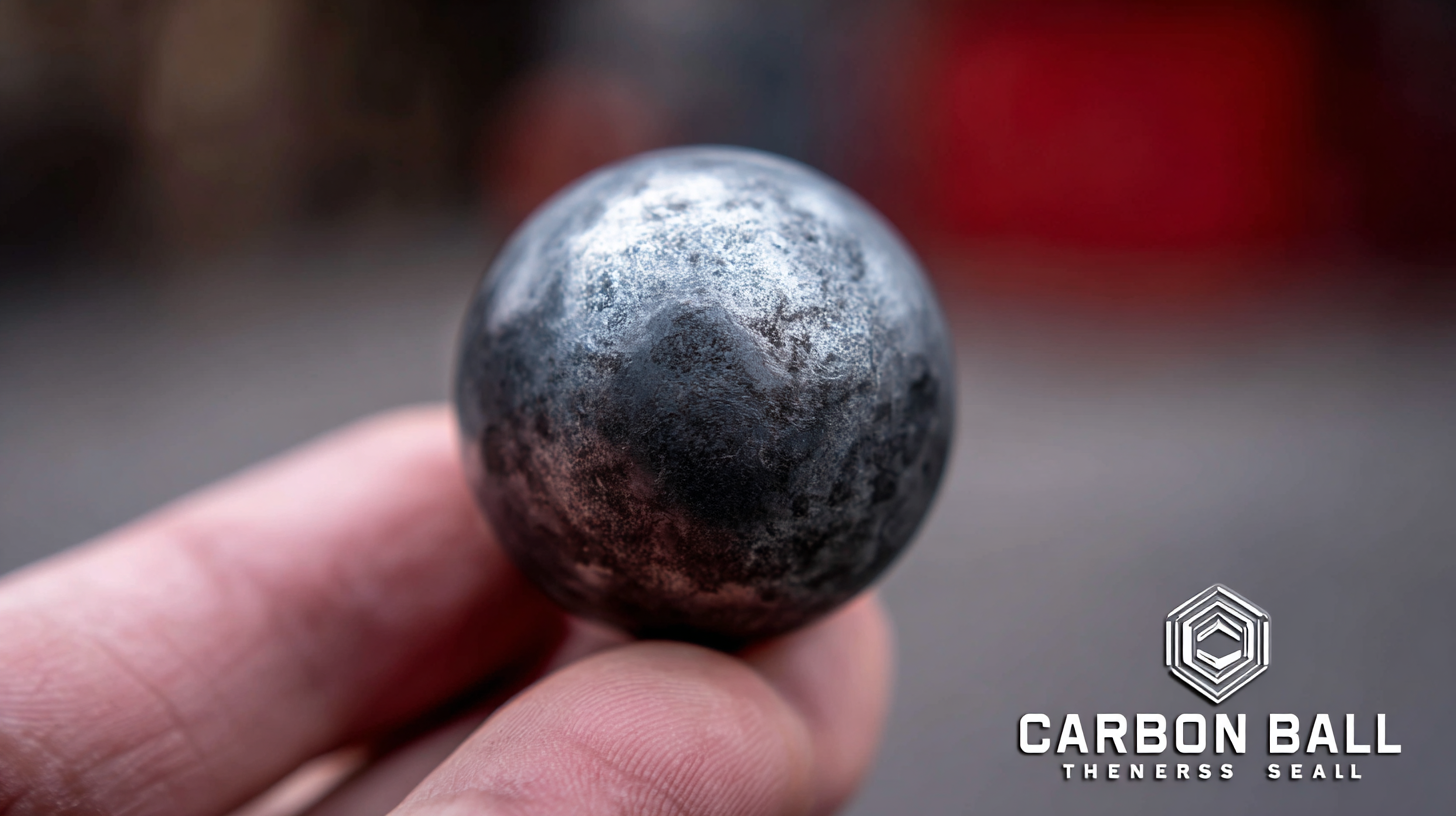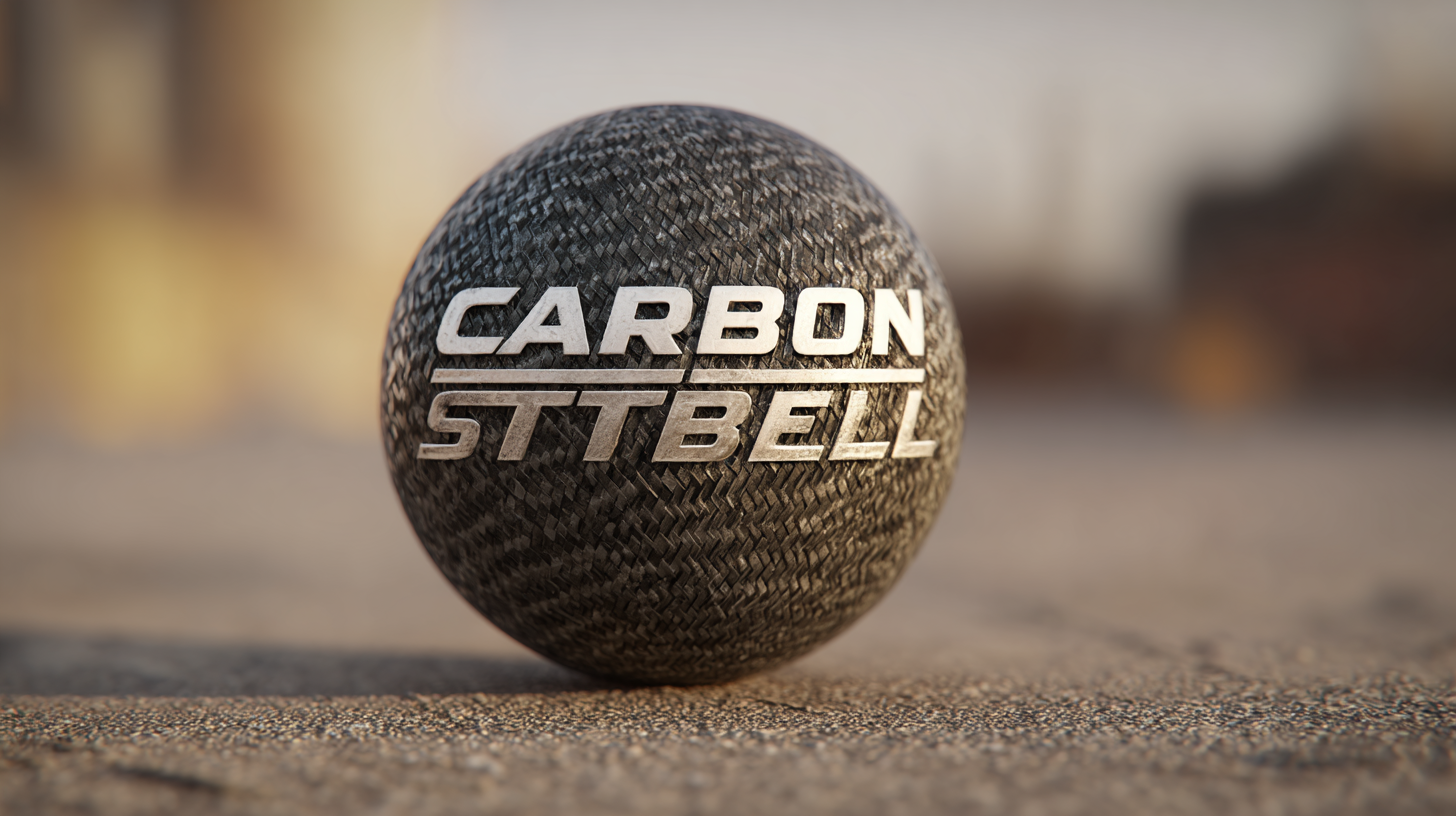
In the rapidly evolving landscape of manufacturing and engineering, selecting the right components is crucial for optimizing performance and ensuring long-term success. Among these components, the Carbon Steel Ball stands out as a fundamental element utilized across various applications, from automotive to machinery. As we look towards the technological development trends of 2025, businesses must consider not just the immediate requirements for quality and durability but also the advancements that may influence materials and production techniques. Understanding the specific properties of Carbon Steel Balls, as well as their potential for enhanced performance in innovative applications, becomes essential. This blog aims to guide you through the intricacies of choosing the best Carbon Steel Ball for your business needs, helping you align your selections with future technological trends to stay ahead in the competitive market.

When selecting carbon steel balls for your industry, several critical factors must be considered to ensure optimal performance and longevity. First and foremost, it's essential to evaluate the specific hardness and diameter requirements for your application. According to a industry report from Grand View Research, the demand for precision-grade carbon steel balls has surged, indicating that businesses increasingly prioritize durability and reliability in their components. Different applications may necessitate varying hardness ratings, with common values ranging from 58 to 65 HRC (Rockwell Hardness Scale), which directly impacts the wear resistance and lifespan of the balls.
Another key factor is assessing the environmental conditions in which these steel balls will operate. For instance, exposure to moisture and corrosive chemicals can significantly affect the performance of carbon steel. A study by MarketsandMarkets suggests that the global market for corrosion-resistant materials is projected to reach $220 billion by 2025, emphasizing the importance of selecting carbon steel balls with appropriate coatings or treatments for your specific ecosystem. By thoroughly analyzing these criteria, businesses can make informed decisions that align with their operational needs and enhance overall efficiency.
| Factor | Description | Importance Level | Typical Applications |
|---|---|---|---|
| Material Grade | Refers to the carbon content and other alloying elements, affecting strength and wear resistance. | High | Industrial machinery, automotive applications |
| Diameter | The size of the ball that must match the specifications of your application. | Medium | Bearing systems, ball screws |
| Finish | Surface treatment that affects the ball's performance and corrosion resistance. | High | Hydraulic systems, precision instruments |
| Hardness | Indicates resistance to deformation and wear, essential for longevity. | High | Pumps, conveyors |
| Cost | Overall expense connected to the procurement of carbon steel balls. | Medium | General manufacturing |
When selecting carbon steel balls for industrial applications, it is crucial to understand the different grades available and their specific uses. Carbon steel balls are typically classified into several grades based on their carbon content, heat treatment process, and hardness.
 For instance, AISI 1010 is a low-carbon steel grade that is often used in applications requiring moderate strength and wear resistance, making it ideal for hobbyist projects and basic machinery components. Comparatively, AISI 52100, a high-carbon steel, offers improved hardness and wear resistance, which is essential for high-performance bearings and precision mechanical components, as reported by the American Society for Testing and Materials (ASTM).
For instance, AISI 1010 is a low-carbon steel grade that is often used in applications requiring moderate strength and wear resistance, making it ideal for hobbyist projects and basic machinery components. Comparatively, AISI 52100, a high-carbon steel, offers improved hardness and wear resistance, which is essential for high-performance bearings and precision mechanical components, as reported by the American Society for Testing and Materials (ASTM).
Another vital aspect to consider is the application environment. Carbon steel balls exposed to high humidity or corrosive substances can suffer from oxidation, leading to performance degradation. According to a study published in the Journal of Materials Science, the surface finish and coating can significantly enhance the corrosion resistance of these balls, extending their service life by up to 300% in adverse conditions. Therefore, choosing the correct grade of carbon steel ball not only optimizes performance but also ensures longevity, ultimately saving on replacement costs and downtime for businesses.
When it comes to manufacturing, the choice of materials can significantly influence the quality and efficiency of production. High-quality carbon steel balls stand out as an essential component in various applications, offering a range of benefits that align with modern manufacturing needs. One of the primary advantages is their durability, which ensures longer service life and reduced downtime, ultimately leading to significant cost savings for businesses. Additionally, the superior strength and resilience of carbon steel balls allow them to withstand high pressures and stresses, making them ideal for heavy-duty machinery and equipment.
Moreover, the enhanced performance of carbon steel balls contributes to greater precision in manufacturing processes. This precision is critical in industries where accuracy is paramount, such as aerospace and automotive sectors. Recent advancements in manufacturing techniques—such as mechanochemical methods—further enhance the properties of carbon-based materials, showcasing a trend toward sustainable practices. Integrating high-quality carbon steel balls not only optimizes operational efficiency but also supports eco-friendly initiatives, paving the way for a more sustainable manufacturing future.
When it comes to optimizing your business operations, cost-effectiveness is crucial, especially when selecting carbon steel balls. These components are essential for various applications, from bearings to valves, and making the right choice can lead to significant savings. Choosing a high-quality carbon steel ball that aligns with your specific needs can improve durability and efficiency, ultimately reducing replacement and maintenance costs.

Tips: First, assess the requirements of your application. Consider factors like load capacity, operating temperature, and environmental conditions. These elements will help you determine the hardness and grade of the carbon steel ball that will perform best.
Second, evaluate suppliers based on their production standards and quality control measures. A reliable supplier can provide thorough certifications and guarantees, ensuring that the material meets your expectations.
Moreover, always keep an eye on the total cost of ownership rather than just the upfront price. While a cheaper option might seem economical initially, it could lead to more frequent replacements or higher operational costs in the long run. Investing in higher-quality carbon steel balls can yield better performance and longer service life, enhancing the overall efficiency of your business.
When sourcing carbon steel balls for your business, understanding the suppliers’ capabilities and reliability is crucial. Start by identifying your specific needs—whether it's size, durability, or particular grades of carbon steel. Creating a list of potential vendors is your first step. Focus on suppliers that have a proven track record in your industry and offer transparency in their production processes. Use online platforms, trade shows, and industry forums to gather insights and recommendations.
Once you have a shortlist, evaluate each supplier by requesting samples and reviewing their quality assurance measures. Ask about their material sourcing, manufacturing processes, and certifications. It's also beneficial to seek feedback from existing customers regarding their experiences with order fulfillment and support. By prioritizing these elements, you can make informed decisions that not only impact your product quality but also contribute significantly to your operational efficiency and bottom line. A meticulous approach to vendor sourcing will enhance your business's resilience and elevate customer satisfaction.
